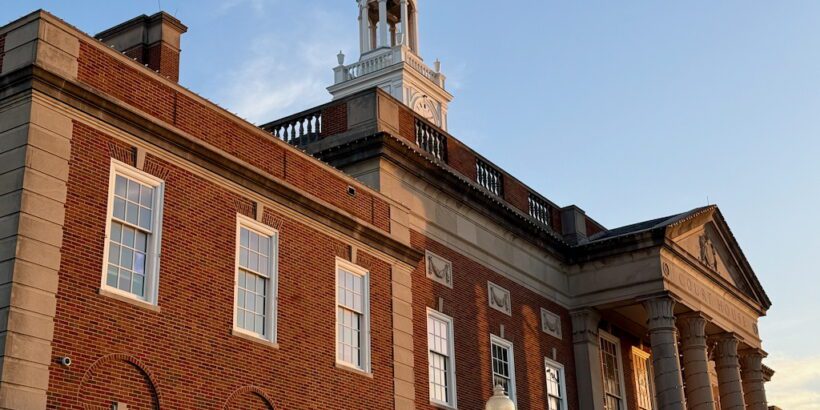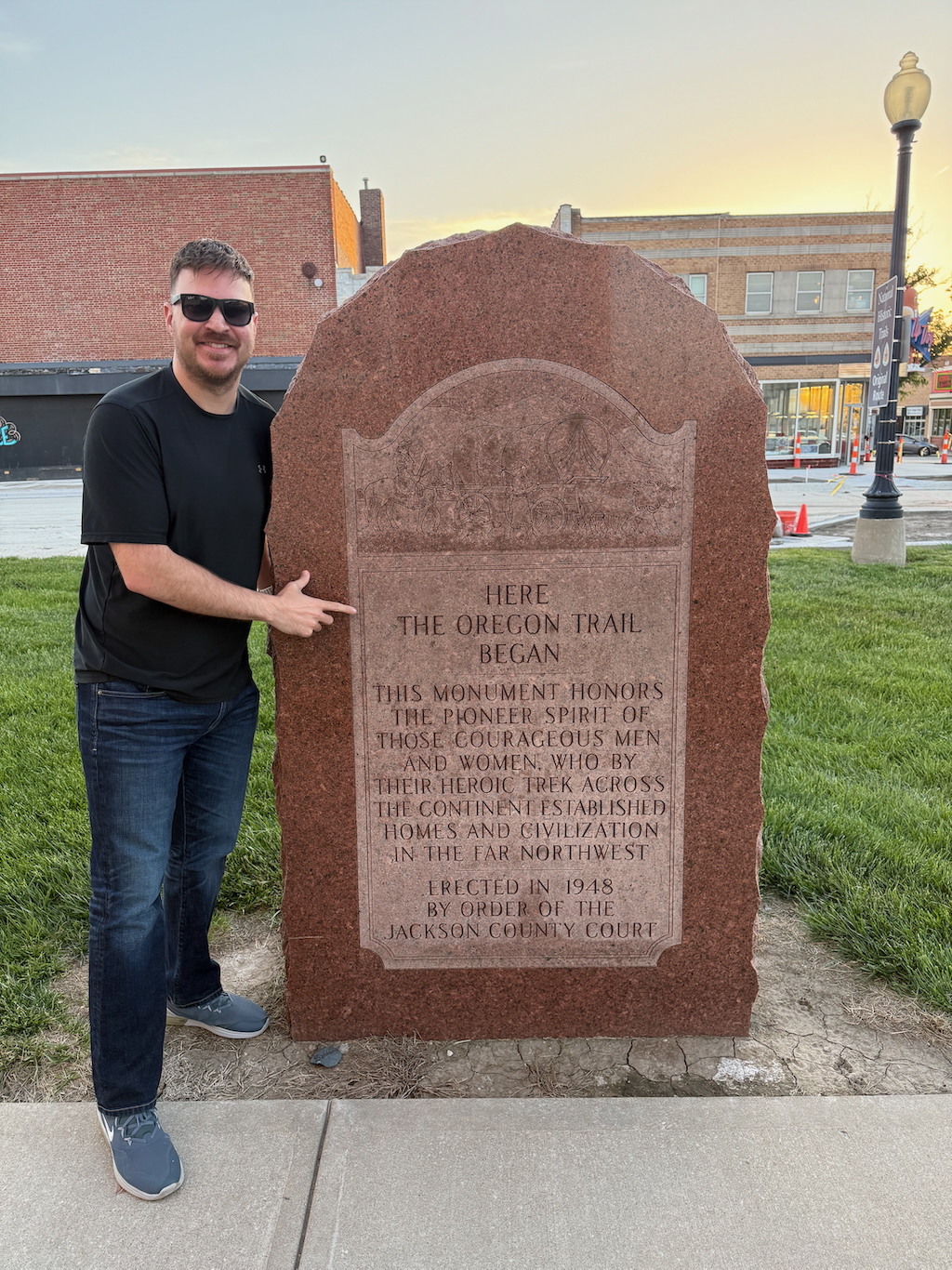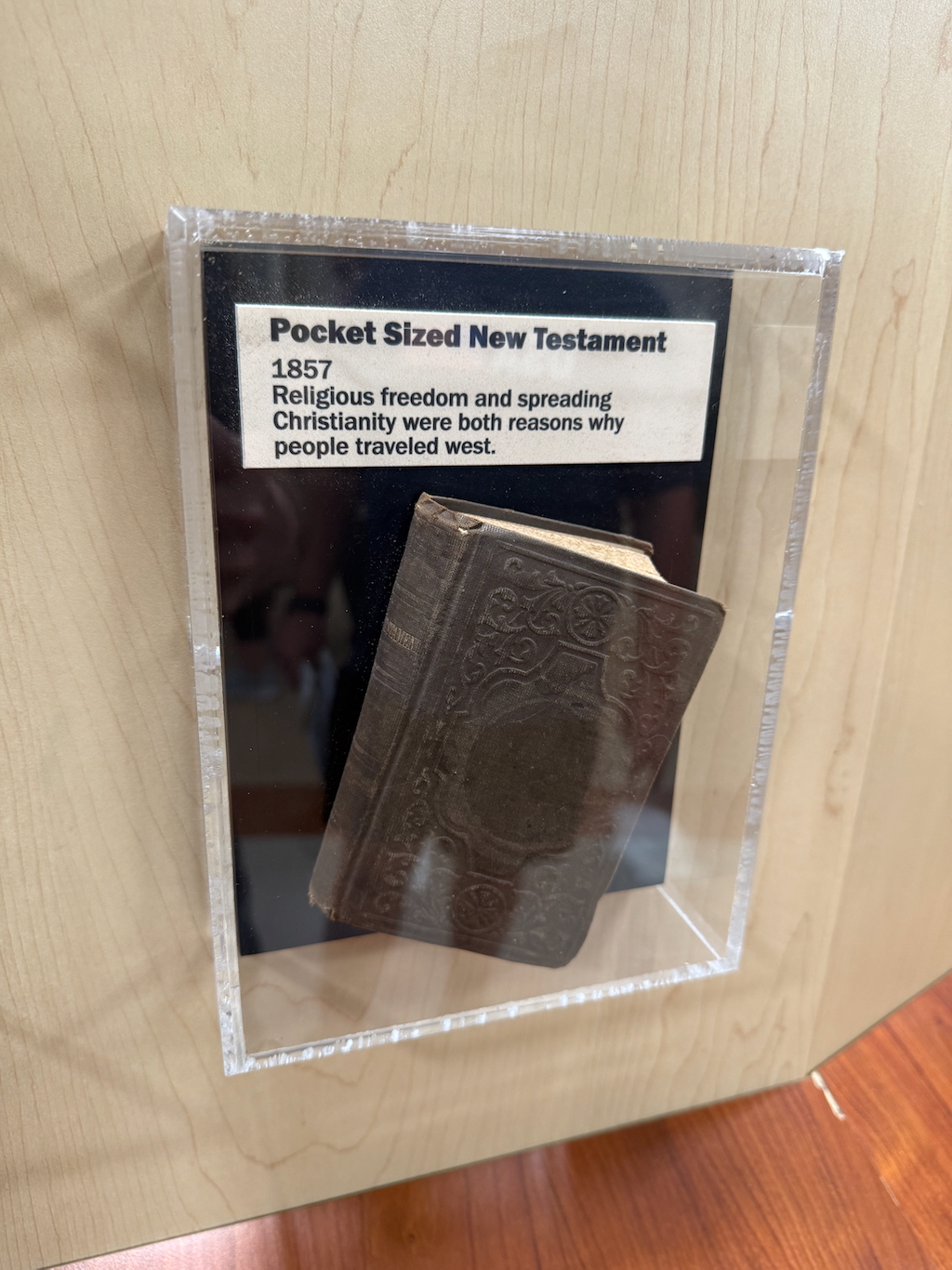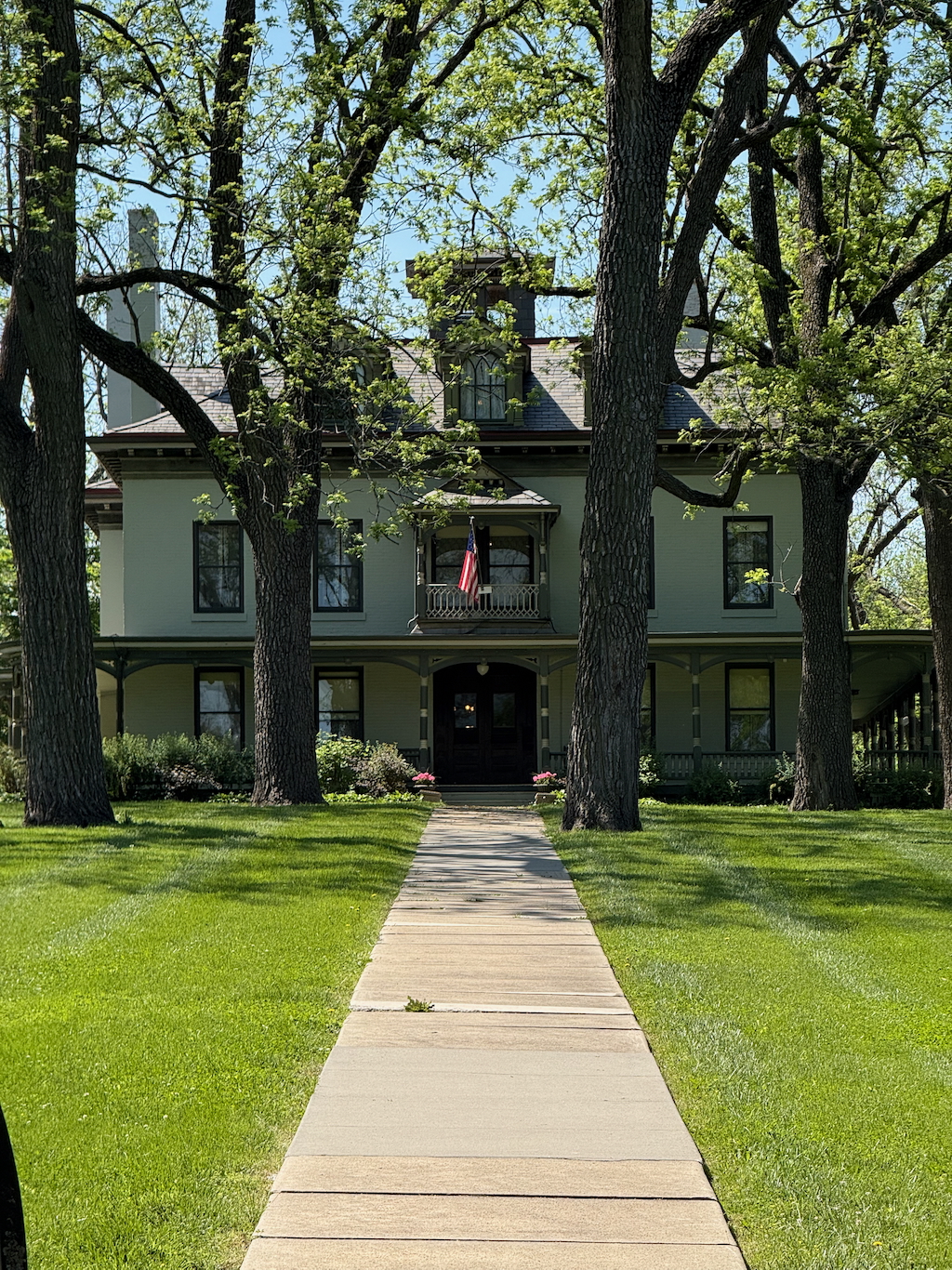Independence, Missouri might be most famous as Harry S. Truman’s hometown, but there’s a lot more to this place than presidential history—though you’ll definitely want to start there.
Independence was also the famous starting point of the Oregon Trail, where thousands of pioneers began their westward journey. Plus, it holds significant meaning for the Mormon Church, as it was once designated by early church leaders as a gathering place and a site for their promised Zion.
Whether you’re into old-school soda fountains, historic train depots, or one-of-a-kind museums, this small city packs a punch for travelers who like their destinations with a little character.
Let’s dive into some of the best things to do in Independence.
1. Explore the starting point of the Oregon Trail (and other trails)
Independence was more than just a starting line—it was the jumping-off point for thousands of pioneers heading west on the Oregon, California, and Santa Fe Trails. Courthouse Square is the official “starting point” landmark and it’s where folks registered their wagons and stocked up on supplies.
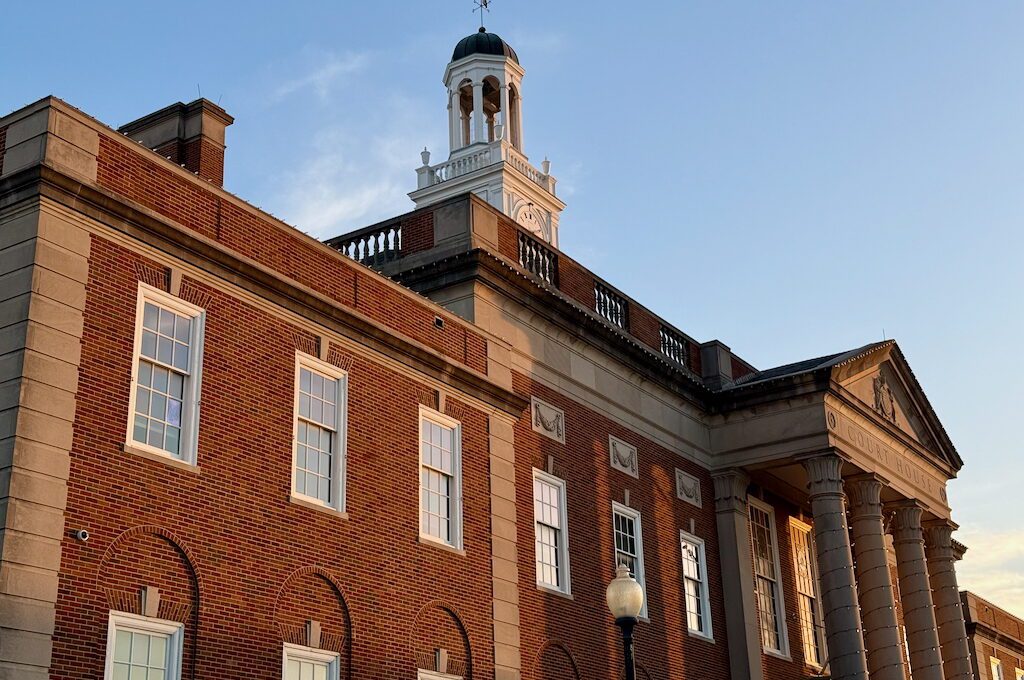
You can find monuments dedicated to the trails on the grounds of the courthouse along with some impressive statues of Truman and Andrew Jackson (more on the courthouse later).
The trail’s footprint is also scattered all over town—and still visible if you know where to look.
One of the most striking places to feel that history is Minor Park, about 25 minute drive from the square.
This was the site of the first river crossing on the trail, and it’s not hard to imagine the scene: creaking wagon wheels, teams of oxen, families watching nervously as they forded the Blue River. It would be the first of many river and stream crossings ahead of them on the 2,000+ mile journey.
There’s a small pull-out and parking lot with interpretive panels right off of Red Bridge Road. If you look closely, you can still see the deep wagon swales carved into the earth—gentle dips left behind by thousands of wooden wheels grinding through slick mud as they were pulled out of the river over a century ago.
It’s a quiet, grassy park now, but standing there, it’s easy to picture the beginning of that long, uncertain journey west.
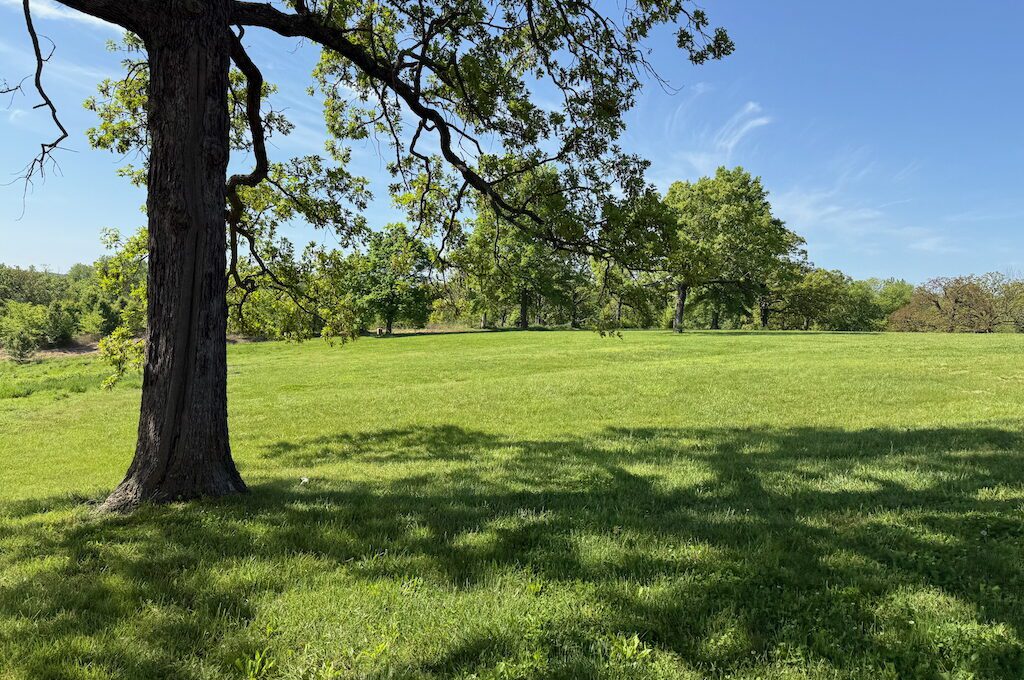
Foodie tip: If you visit the swales at Minor Park I suggest hitting up nearby Fox and Bull Baking Co very close nearby. They have some of the best cinnamon rolls I’ve ever tried! Look at that icing!

2. Harry S. Truman Sites
You can’t visit Independence without exploring the places that shaped the 33rd president of the United States.
Start with the Harry S. Truman National Historic Site, which includes the home where Harry and Bess Truman lived for decades—before, during, and after his time in the White House.
The house is preserved just as the Trumans left it, right down to the books on the shelves and hats by the door. Free guided tours (offered by the National Park Service) walk you through the main floor and give a real sense of the former president’s everyday life—gardening in the yard, reading the morning paper, and greeting neighbors on his walks around town.
It’s a rare chance to see how a president actually lived after the cameras were off and the crowds were gone—and it’s just one stop in Truman’s hometown legacy.
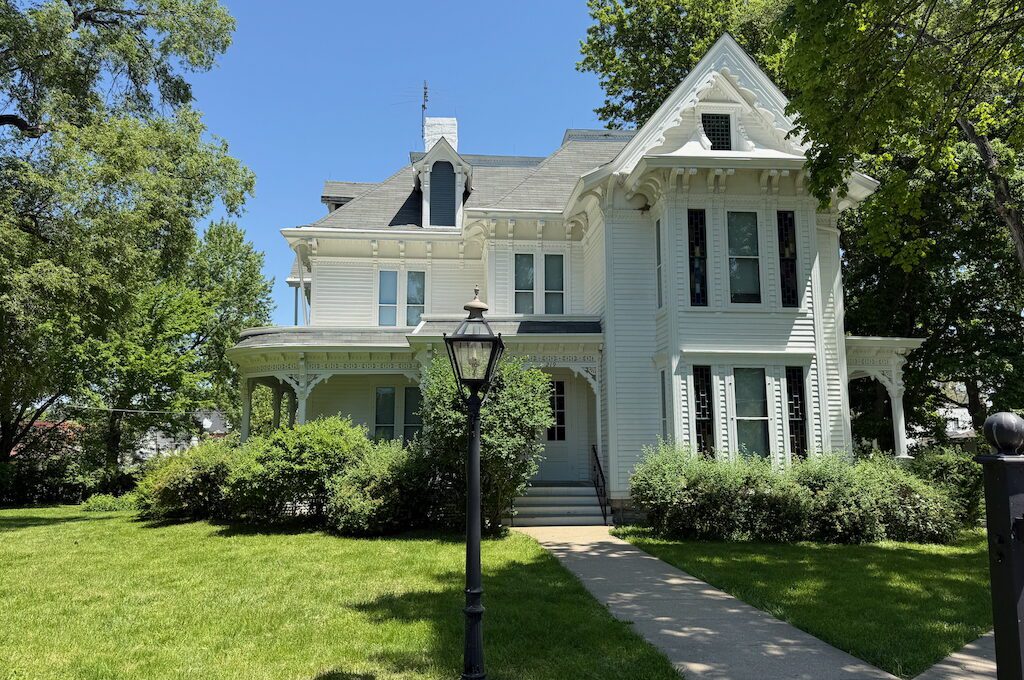
3. Harry Truman’s boyhood home
Just a short walk from the Square, Harry Truman’s boyhood home offers a quick glimpse into the early life of America’s 33rd president. The two-story (private) house sits on a quiet street and has been carefully restored to reflect the time when young Harry lived there from 1890 to 1905.
While some updates have been made over the years, it still captures the modest lifestyle and small-town roots that helped shape Truman.
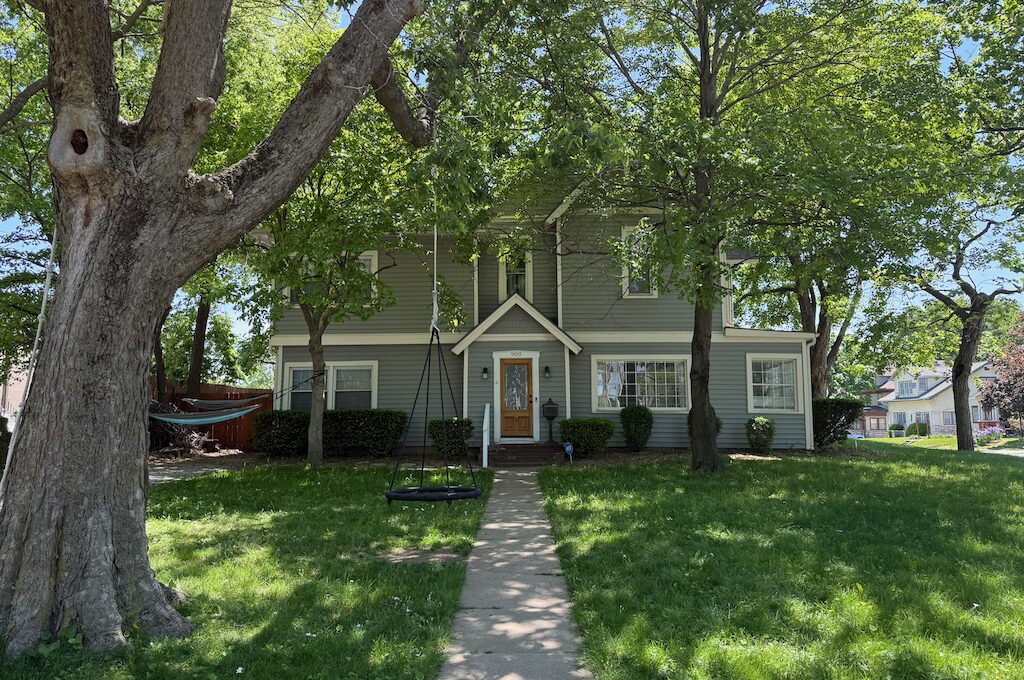
4. Harry S. Truman Presidential Library & Museum
No trip to Independence is complete without a stop at the Harry S. Truman Presidential Library & Museum.
Recently renovated and modernized, the museum now features state-of-the-art exhibits, immersive displays, and a more personal look at Truman’s life, from his humble beginnings in Missouri to his rise as the 33rd President of the United States.
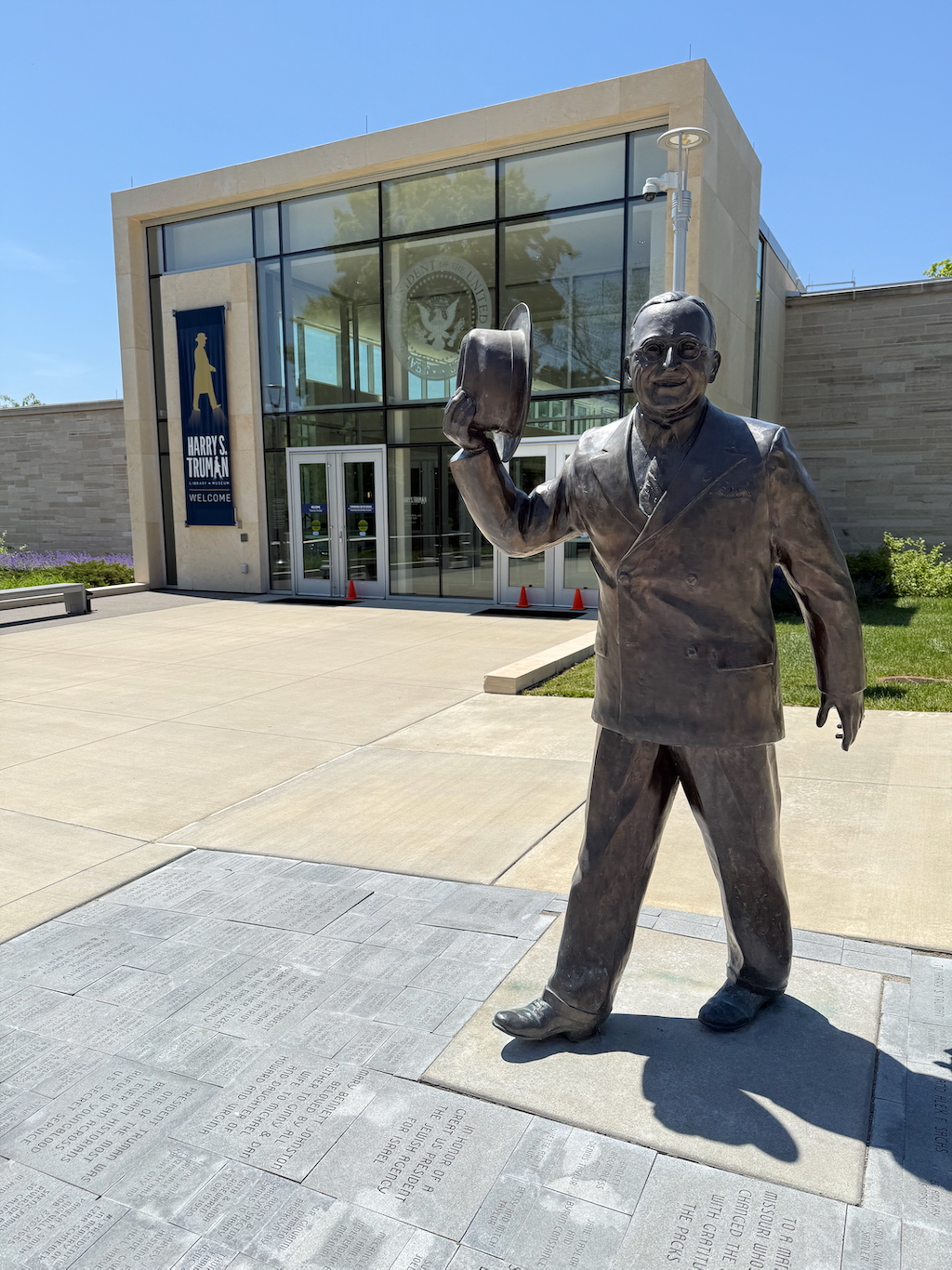
You’ll walk through key moments of the 20th century, including the final days of World War II, the decision to drop the atomic bomb, the founding of the United Nations, the start of the Cold War, and the early days of the Civil Rights Movement.
The exhibits balance global events with personal artifacts—letters, photographs, even Truman’s “The Buck Stops Here” desk sign. There’s also a replica of the Oval Office, interactive elements for kids and adults alike, and a theater that plays short films about Truman’s legacy.
Outside, the courtyard offers a peaceful place for reflection, and you can visit the final resting place of Harry and Bess Truman, located on-site.
Whether you’re a history buff or just curious about the man who went from farm boy to Commander-in-Chief, this museum gives you a deeper appreciation for Truman’s leadership—and the complicated world he helped shape.
5. Jackson County Courthouse
Also known as the Truman Courthouse, this stately 1930s-era building sits right on the Independence Square and played a major role in Harry S. Truman’s early political career.
Before he ever set foot in the White House, Truman served as Presiding Judge of Jackson County—a position that had more to do with overseeing county infrastructure and budgets than courtroom drama, but it was his first big step into public service.
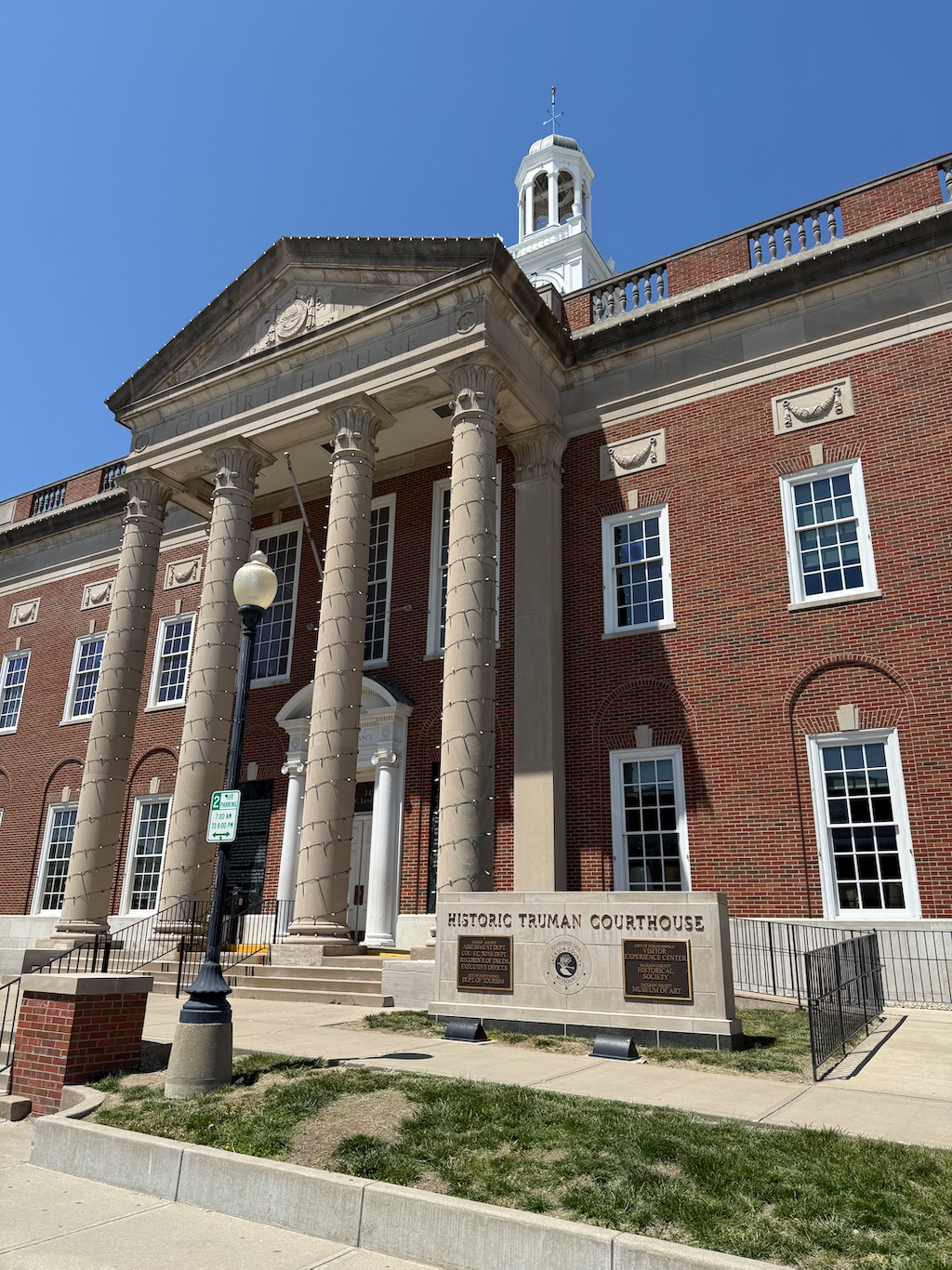
The courthouse has been beautifully restored and is still an active government building, but visitors are welcome to tour select areas, including a recreation of Truman’s original office. Standing in that room, with its vintage desk and period furnishings, gives you a real sense of the man before the presidency.
Outside, the architecture mixes neoclassical details with midwestern sensibility, complete with columns, limestone walls, and a clock tower that looks out over the Square. You can literally walk in Truman’s footsteps and feel the history of Independence up close.
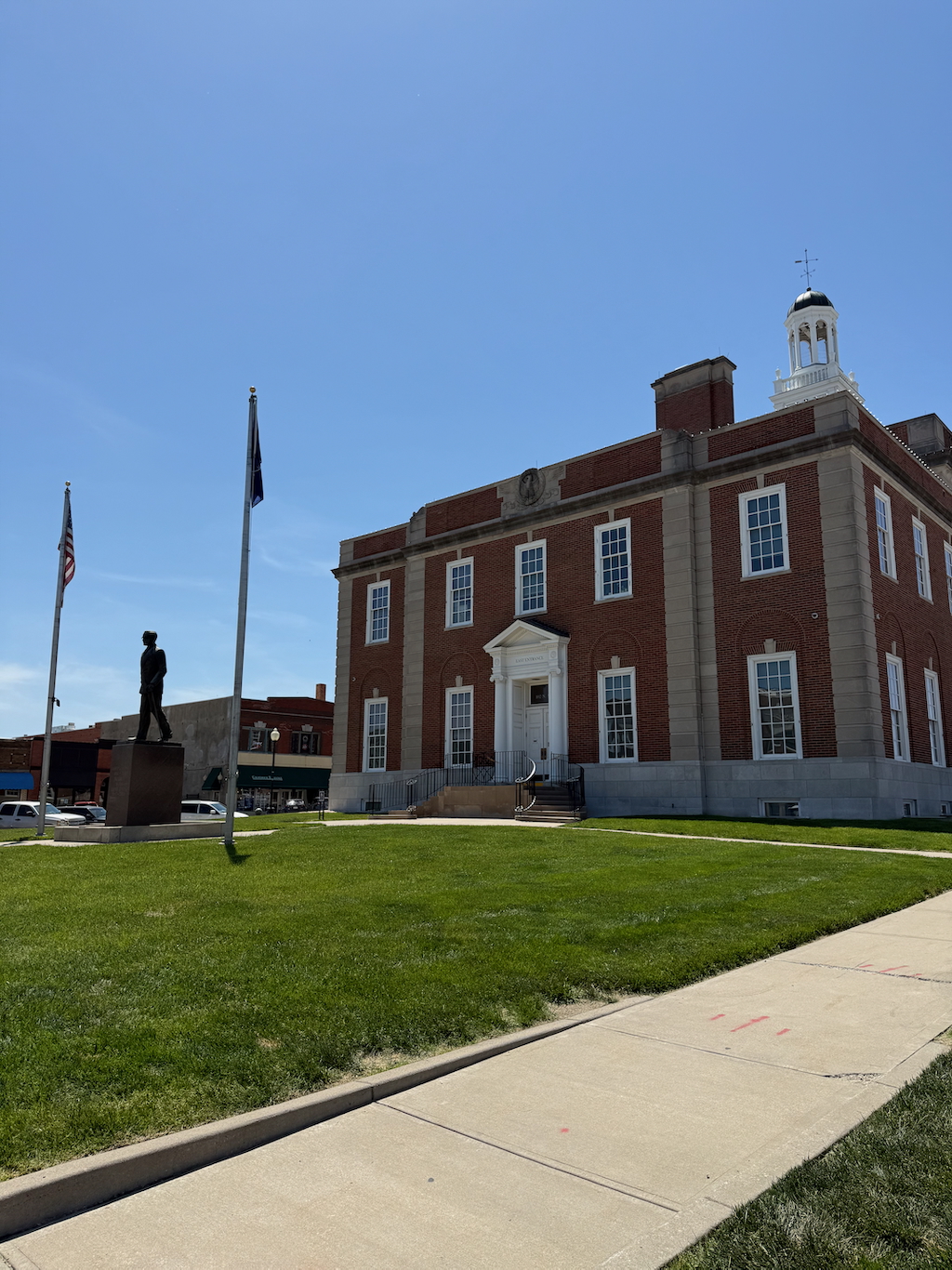
6. Clinton’s Soda Fountain
Right on the historic Independence Square, Clinton’s Soda Fountain occupies the spot where a young Harry Truman once worked his first job back when the corner shop was a pharmacy and soda counter.
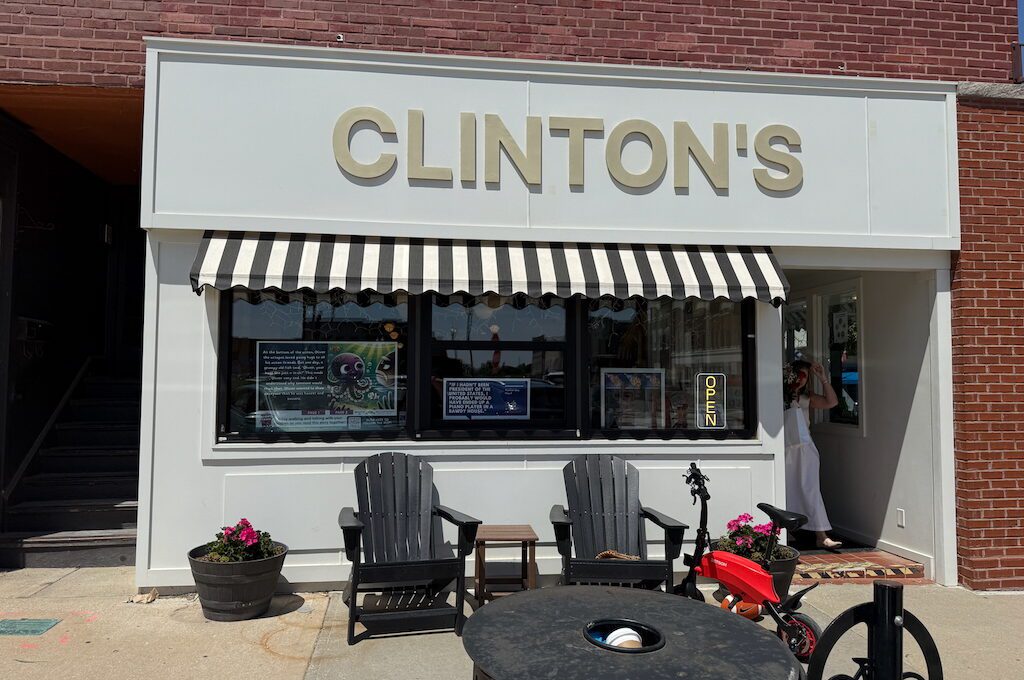
Today, it’s still dishing up old-fashioned phosphates, malts, and sundaes to travelers from all 50 states. Whether you go for Harry’s Favorite (a butterscotch sundae with chocolate ice cream) or craft your own sweet combo, Clinton’s is the kind of place where time slows down.
I had a classic chocolate shake, and it hit the spot—simple, rich, and exactly what you’d hope for in a place like this. With marble counters, swivel stools, and retro charm, it’s the perfect stop to cool off and unwind after a day of sightseeing or shopping on the Square.
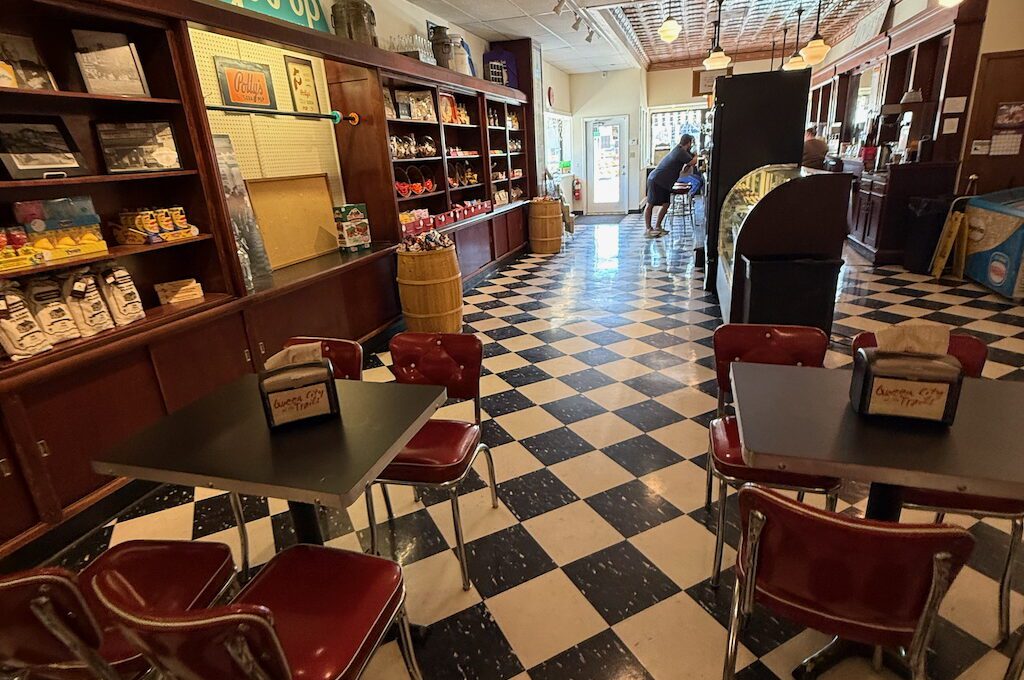
7. 1859 Jail & Marshal’s Home Museum
Step into the 1859 Jail Museum, and you’re stepping straight into Missouri’s Wild West past.
The stone jail was in active use for more than a century, and its most famous inmate was Frank James, brother of the notorious outlaw Jesse James. Frank served time here after turning himself in—and unlike most prisoners, he was reportedly allowed to use the jailer’s own bedroom instead of a cell, thanks to his celebrity status and connections.
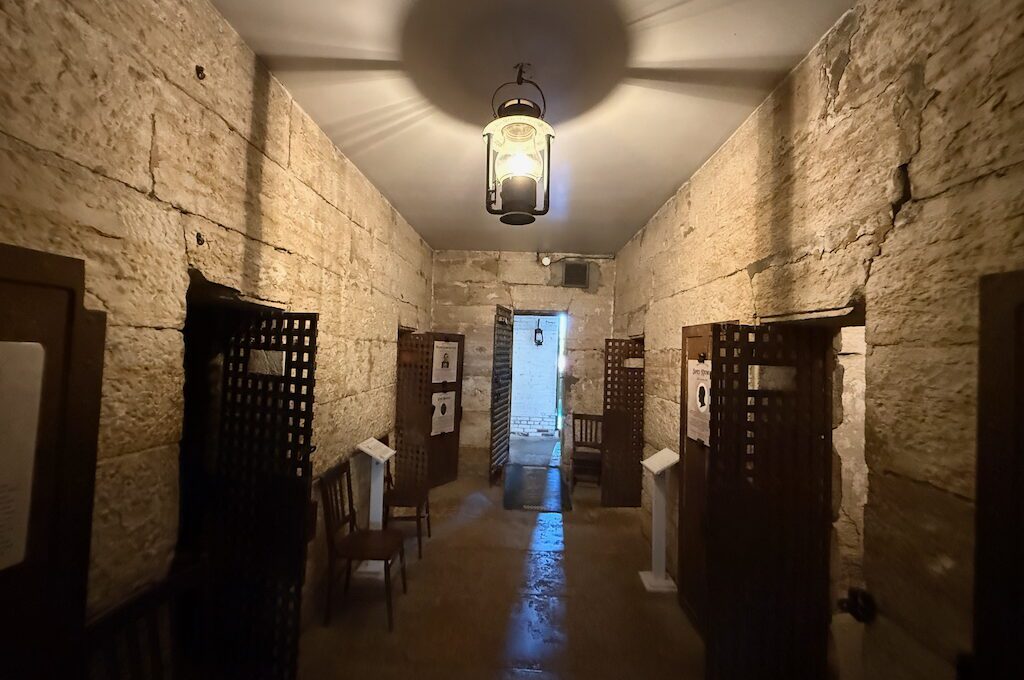
Most of the original jail cells are still intact, and they’re as rough and claustrophobic as you’d expect—thick stone walls, iron bars, and almost no natural light. It’s not hard to imagine the harsh conditions inmates faced back in the 1800s.
Attached to the jail is the Marshal’s home, fully furnished with period-accurate décor that paints a vivid picture of daily life for local law enforcement and their families. There’s even a kitchen, parlor, and children’s bedrooms, complete with authentic tools, clothing, and household items from the era.
The museum also includes rotating exhibits on frontier justice, infamous outlaws, and early Independence history, making it a must for fans of true crime, Westerns, or Old West legends. It’s a self-guided tour, and staff are on hand to answer questions and share lesser-known stories that add color to the history.
Admission is affordable, and it’s located just a short walk from the Square, making it an easy add-on to your day exploring downtown.
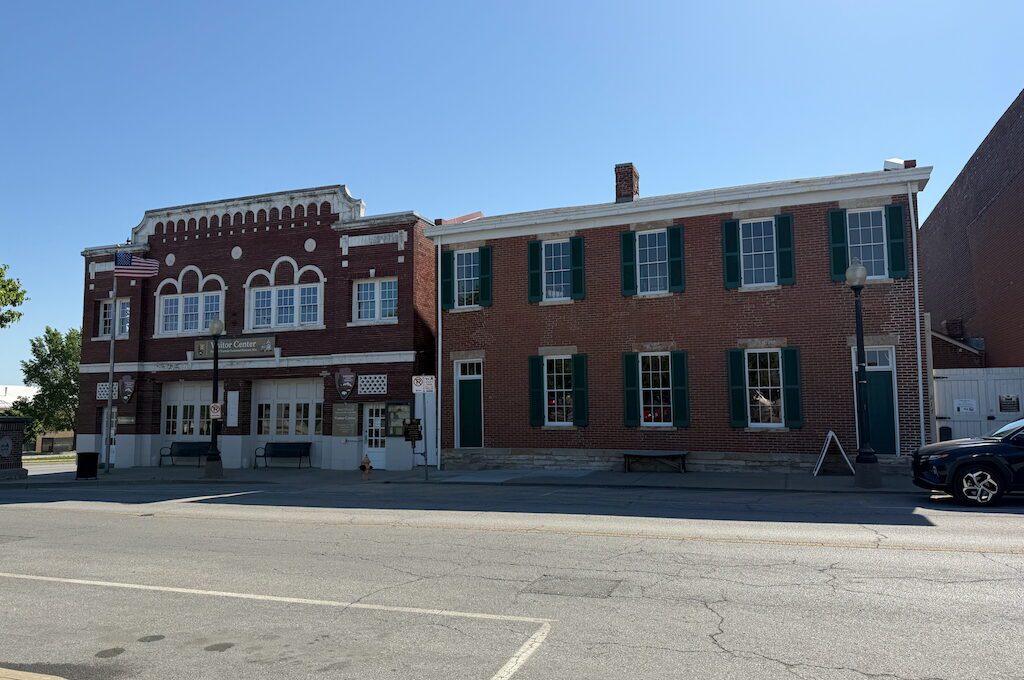
8. National Frontier Trails Museum
Ever wonder what it was really like to head west in a covered wagon?
The National Frontier Trails Museum brings that era to life, tracing the journeys of the thousands of pioneers who set out on the Santa Fe, Oregon, and California Trails—all of which began right here in Independence.
The museum explores the hopes, hardships, and grit of these travelers through interactive exhibits, detailed maps, and even first-hand diary entries from the people who made the journey.
You’ll learn what supplies pioneers packed, how they navigated the terrain, and the real risks they faced—from disease to river crossings to wagon breakdowns. There’s also a good short (but aged) film and a children’s area, making it a family-friendly stop.
Best of all? Admission is free. Whether you’re a history buff or just curious about how people made the leap into the unknown back in the 1800s, this museum gives you a deeper appreciation for just how far we’ve come—and what it took to get here.
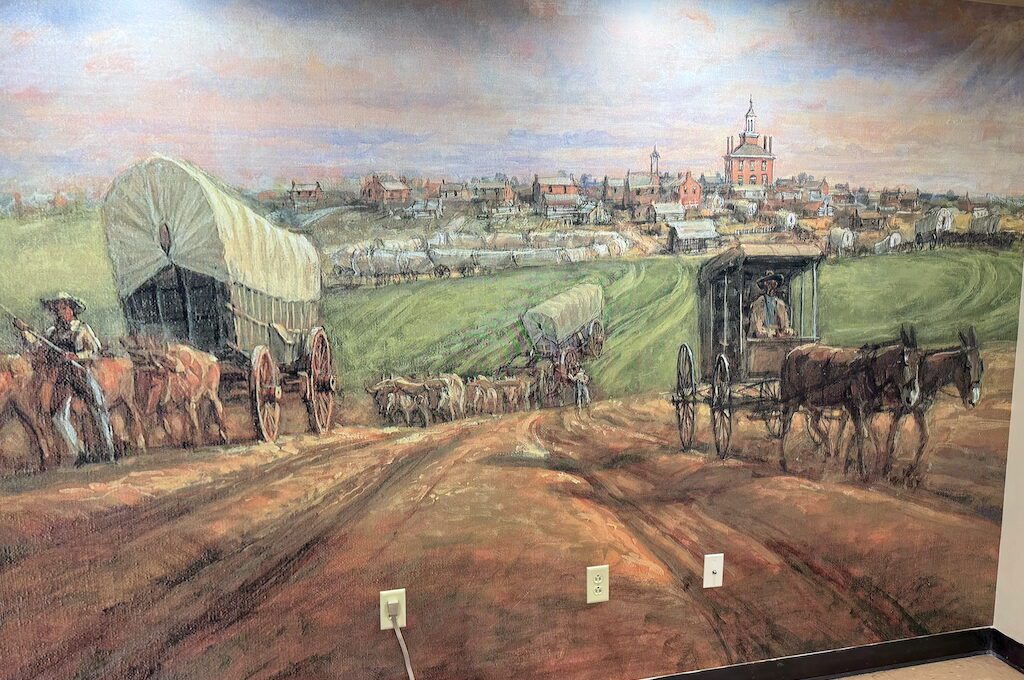
9. Truman Depot (Amtrak Station)
This historic train depot is where Truman gave his famous “whistlestop” campaign speeches—and where he returned home after his presidency. Today, it’s a functional Amtrak station and a piece of history rolled into one. There’s a statue of Truman waving from the back of a train car—iconic and Instagram-worthy.
10. Vaile Mansion
If you’re into Victorian architecture, the Vaile Mansion is a must-see—and honestly, even if you’re not, it’s worth a stop just for the sheer spectacle.
Built in 1881 for frontier businessman and politician Harvey Vaile, this 31-room estate was once considered one of the most extravagant homes west of the Mississippi. With its towering red-brick exterior, French Second Empire roofline, and intricate ironwork, the mansion makes a big impression before you even walk through the door.
Inside, the rooms are filled with lavish period furnishings, hand-painted ceilings, marble fireplaces, and chandeliers, giving a real sense of the wealth and ambition of the Gilded Age. Guided tours dive into the history of the house and the Vaile family—including some darker chapters, like rumors of scandal and tragedy that only add to the intrigue.
The mansion is open for public tours during the warmer months, and it’s especially popular in October, when it’s decorated for Halloween. The combination of Victorian elegance and just the right touch of spookiness makes it feel like you’ve stepped into a gothic novel.
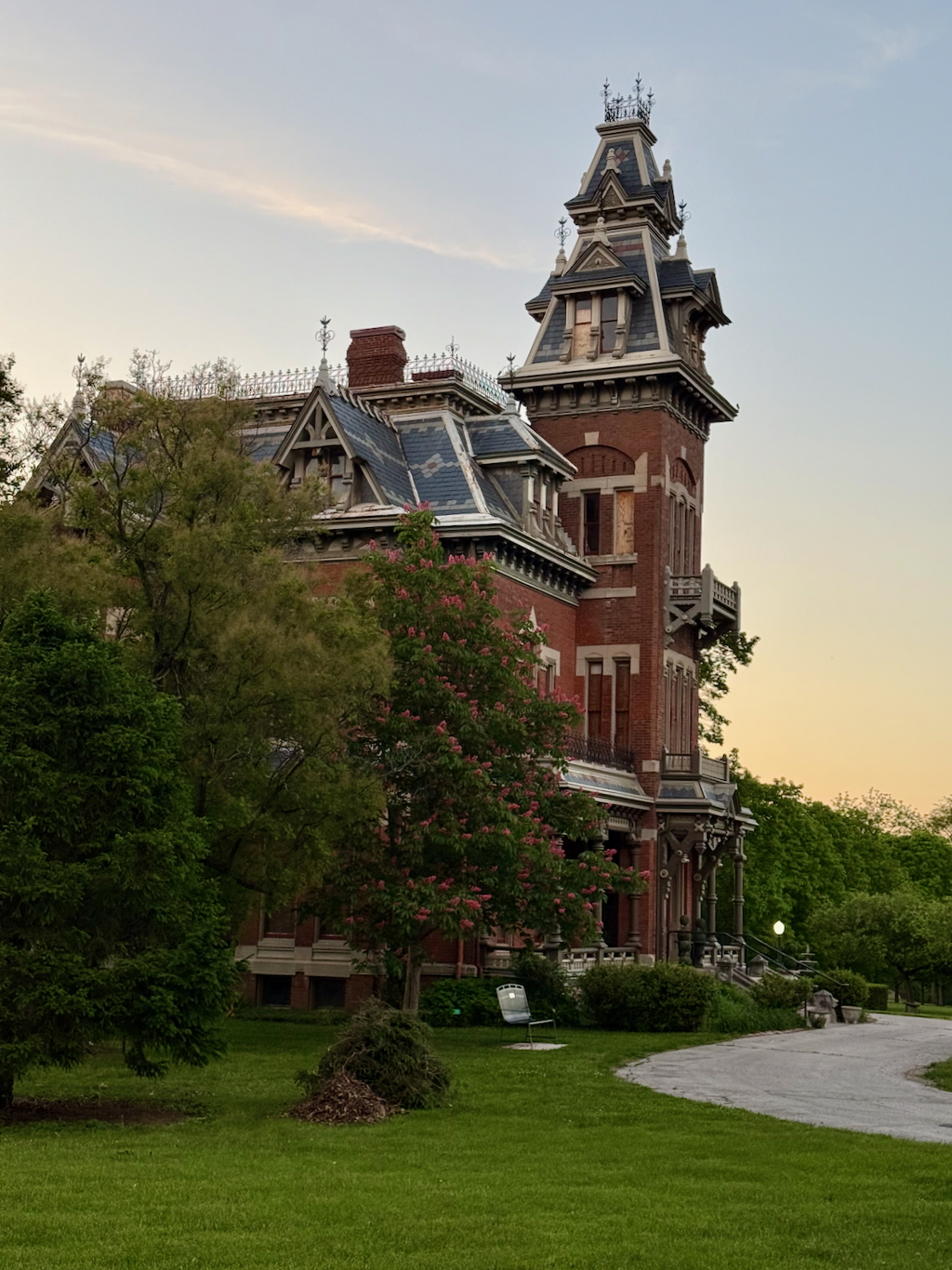
11. Bingham-Waggoner Estate
This 19-acre estate was home to Civil War artist George Caleb Bingham, but its significance goes beyond the house itself.
During the trails era, thousands of covered wagons passed through this very property as they headed west. In the early days of settlement—before formal roads were established—the estate grounds were used as a shortcut that later became part of the Santa Fe Trail.
Because of this prime location, the land saw a string of owners between 1827 and 1878, many hoping to profit by outfitting wagon trains bound for the frontier. Today, you can still spot swales, or wagon ruts, in the field across the bridge from the museum.
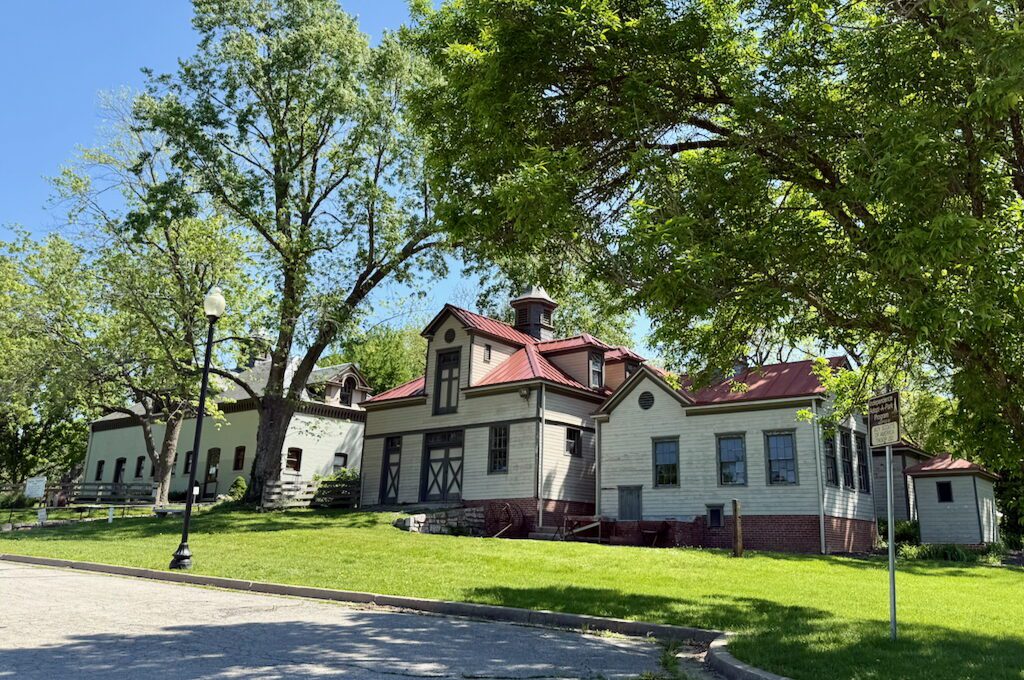
12. Independence Mormon Visitors’ Center & Temple
Independence is a deeply significant place in Latter-day Saint history—early church founder Joseph Smith identified it as the location of Zion, the “center place” of a future holy city. That history is explored in thoughtful detail at the Mormon Visitors’ Center, located just east of the Independence Square.
The center is free to visit and features interactive exhibits, historical displays, and friendly guides who are happy to answer questions about the early days of the church, its migration west, and its lasting connection to the area.
Right across the street stands the Community of Christ Temple, a striking building with a unique spiral-shaped spire that reaches 195 feet into the sky. Completed in 1994, it’s the headquarters of the Community of Christ, a denomination that also traces its roots to Joseph Smith but follows a separate path from the LDS Church.
The interior is modern, serene, and filled with natural light, symbolic art, and open space for prayer and reflection. Outside, the peaceful gardens and reflecting pool offer a quiet spot to sit and take in the surroundings.
Whether or not you’re religious, both places are worth a visit for their cultural significance, architecture, and historical insight into how Independence became a spiritual focal point for so many. Both sites are welcoming to all visitors, and no reservations or admission fees are required.
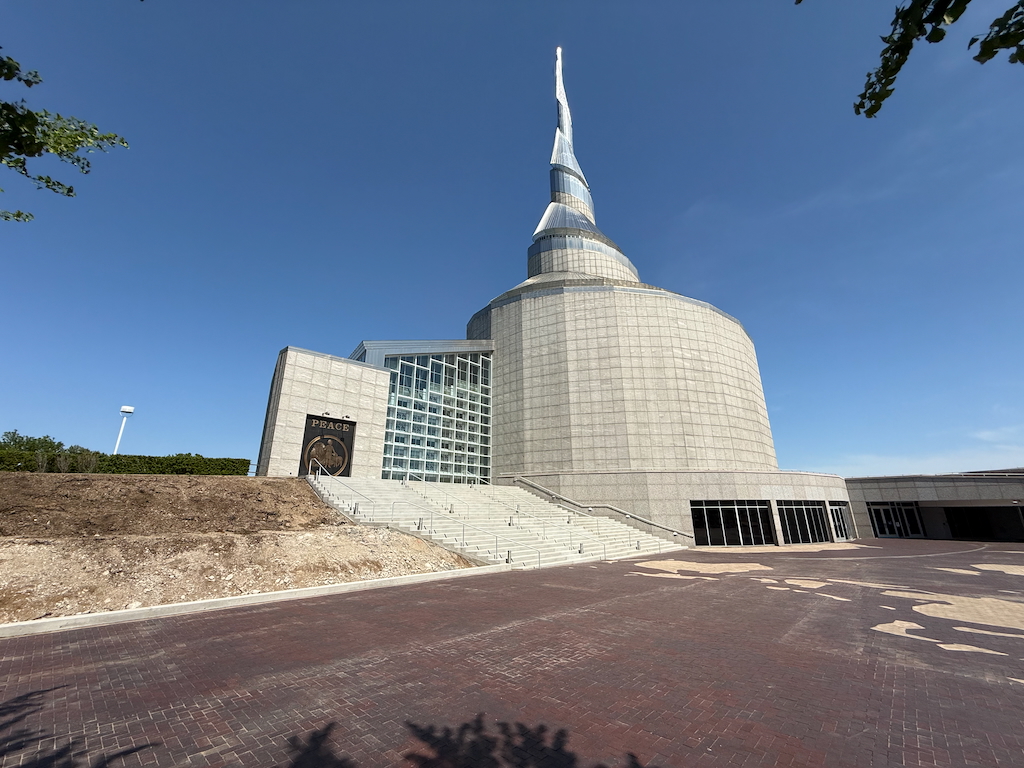
13. Pioneer Spring Cabin
Tucked away in a park not far from the Square, this log cabin marks the site of one of the area’s original freshwater springs. It’s a quick stop, but one that connects you to the early settlers who built the city from the ground up—literally.
Daniel Gillaspia is the Founder of UponArriving.com and the credit card app, WalletFlo. He is a former attorney turned travel expert covering destinations along with TSA, airline, and hotel policies. Since 2014, his content has been featured in publications such as National Geographic, Smithsonian Magazine, and CNBC. Read my bio.

